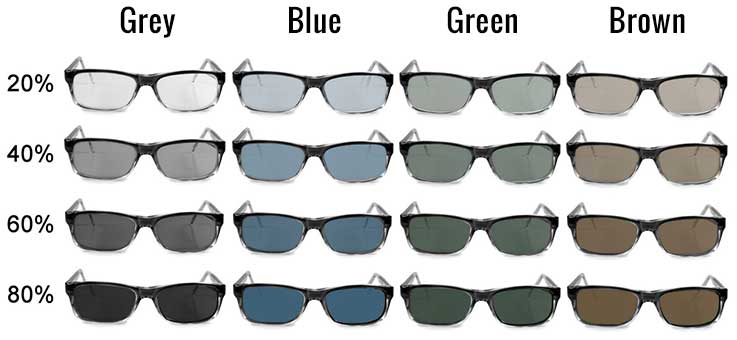All about sunglasses lenses from On the Nose
Eye Protection
The most dangerous components of sunlight entering our eyes are the spectra in the Ultra Violet range. Ultra-Violet light is broken down into four parts, referred to as UV-A, UV-B, UV-C and UV-D. They each represent a range of wavelengths of light within Ultra-Violet light. The ability to block 100% of all four parts of Ultra-Violet light is referred to as UV400.
All Sunglasses in Australia are required by Australian Standards to be UV400.
Sunglasses which block 100% of all UV radiation provide maximum eye protection.
Darkness or Tint of Lenses
The darkness of a lens does not correlate with eye protection. The level of tint simply determines the amount of (harmless*) light passing through the lens to your eyes [*as all dangerous UV light has been blocked if the lens is UV400]. Your choice of tint might be determined by the amount of time you spend in very bright light, personal comfort, or the degree to which you wish your eyes to be hidden behind your lenses.
The amount of tint is described by the sunglasses lens category.
Category 0 - Fashion glasses. No glare protection. Limited UV protection. Less than 20% of brightness blocked. NOT SUNGLASSES
Category 1 - Fashion glasses. Limited glare protection. Some UV protection. 20% - 54% of brightness blocked. NOT SUNGLASSES
Category 2 - SUNGLASSES. Medium glare protection. 54% - 82% of brightness blocked. Good UV protection.
Category 3 - SUNGLASSES. High level of glare protection. 83% - 92% of brightness blocked. Good UV protection.
Category 4 - SUNGLASSES. Very high level of glare protection. 92% - 97% of brightness blocked. Good UV protection. May not be worn while driving.
Mirror coatings on lenses will always decrease the amount of light passing through a lens and thus increase the category of the lens.

Gradient Lenses
Gradient lenses are tinted darker at the top of the lens and lighter at the bottom. The degree of tint or category of the lens is measured in the middle of the lens, directly in front of the pupil. At the top of the lens they may be a higher category and at the bottom they may be a lower category.
Gradient lenses still offer 100% UV protection (UV400).
Polarisation
Polarisation reduces the amount of reflected light or glare which can pass through the lens.
Polarised sunglasses will reduce glare when driving or from water. They reduction in glare gives an apparent increase in detail, colour and sharpness of the view. Many people find the reduction in glare more comfortable in all circumstances.
Polarised sunglasses do NOT increase protection from dangerous UV light. All Sunglasses in Australia whether polarised or not provide full protection from dangerous UV light.
Polarised lenses may cause problems when trying to view LCD displays (fish finders, depth sounders, bike computers, some mobile phones).
